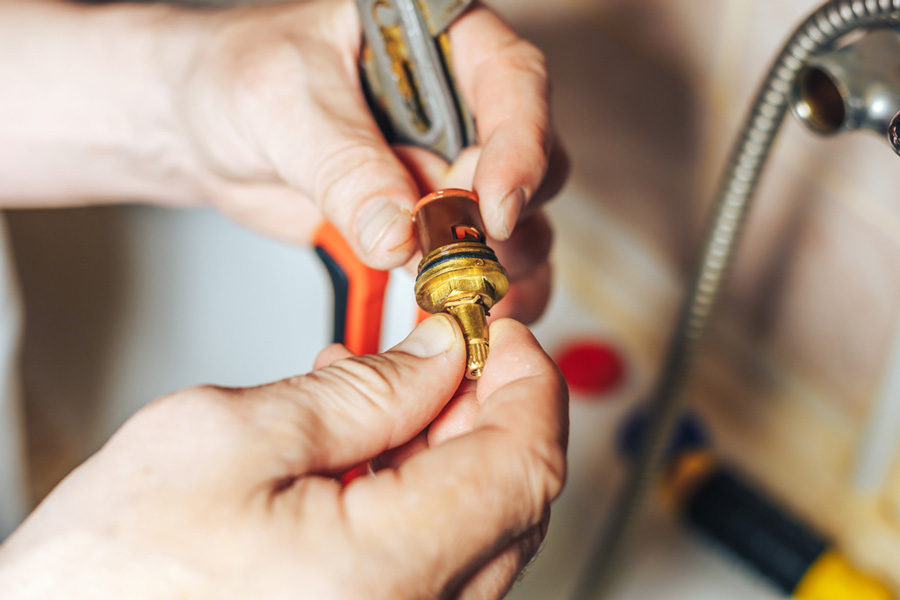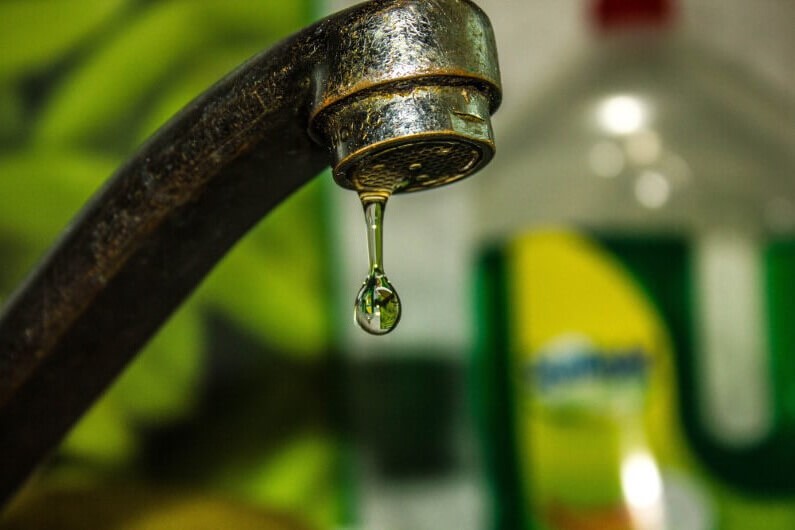Exploring the Importance of Repairing a Dripping Faucet
Exploring the Importance of Repairing a Dripping Faucet
Blog Article
Were you interested in info on Leaky Faucets: Why They Happen & What to Do About Them?

Leaking faucets may appear like a small trouble, yet their influence surpasses simply the nuisance of the sound. From wasting water to sustaining unneeded economic expenses and health and wellness threats, neglecting a dripping faucet can bring about numerous repercussions. In this short article, we'll explore why it's vital to address this common house problem promptly and effectively.
Wastefulness of Water
Environmental Influence
Leaking taps contribute significantly to water wastage. According to the Epa (EPA), a single faucet trickling at one drip per second can lose more than 3,000 gallons of water annually. This not just strains water sources yet likewise impacts ecosystems and wild animals based on them.
Financial Costs
Raised Water Costs
Beyond the ecological effect, dripping faucets can inflate water expenses substantially. The collected wastefulness in time converts right into greater energy expenditures, which could have been avoided with prompt repair services.
Potential Building Damages
Moreover, prolonged dripping can lead to harm to components and surfaces surrounding the tap. Water buildup can trigger discoloration, rust, and also architectural issues if left unattended, leading to extra fixing prices.
Health Concerns
Mold and Mildew Growth
The constant presence of moisture from a dripping tap develops a perfect environment for mold and mildew and mold development. These fungi not just jeopardize indoor air high quality however likewise present health threats, specifically for individuals with respiratory problems or allergic reactions.
Waterborne Diseases
Stationary water in trickling taps can become a breeding place for microorganisms and other microorganisms, increasing the threat of waterborne diseases. Impurities such as Legionella germs grow in stagnant water, possibly resulting in significant health problems when consumed or inhaled.
Do it yourself vs. Specialist Repair work
Pros and Cons of Do It Yourself Repair
While some may try to fix a dripping tap themselves, DIY repair services include their very own collection of challenges. Without appropriate understanding and devices, do it yourself attempts can exacerbate the issue or result in insufficient repair services, lengthening the trouble.
Advantages of Working With a Specialist Plumber
Working with a specialist plumber makes sure that the underlying reason for the trickling tap is resolved properly. Plumbers have the experience and tools to diagnose and fix tap concerns successfully, saving time and minimizing the threat of more damage.
Step-by-Step Overview to Taking Care Of a Dripping Faucet
Devices Needed
Before trying to repair a trickling faucet, gather the necessary devices, including a flexible wrench, screwdrivers, substitute parts (such as washing machines or cartridges), and plumber's tape.
Typical Tap Issues and Their Solutions
Recognize the type of tap and the specific problem creating the drip. Typical troubles include damaged washing machines, corroded valve seats, or damaged O-rings. Refer to producer directions or on-line tutorials for step-by-step assistance on repair services.
Safety nets
Routine Maintenance Tips
To stop leaking taps, do regular maintenance such as cleaning aerators, examining for leakages, and changing damaged components without delay. In addition, take into consideration installing water-saving tools or updating to extra reliable components.
Value of Prompt Fixes
Attending to leaking faucets as soon as they're noticed protects against more water waste and potential damages, inevitably conserving both water and money in the long run.
Influence On Property Worth
Understanding of Well-Maintained Residential Or Commercial Property
Keeping a building in good condition, including addressing maintenance concerns like leaking taps, enhances its regarded value and worth among prospective buyers or renters.
Impact on Resale Value
Features with well-maintained plumbing fixtures, consisting of taps, command higher resale values in the realty market. Resolving trickling faucets can contribute to a positive perception throughout home inspections and settlements.
Environmental Duty
Individual Contribution to Conservation
Taking responsibility for repairing leaking faucets lines up with wider efforts toward water preservation and ecological sustainability. Every person's activities jointly make a substantial influence on protecting precious resources.
Lasting Living Practices
By focusing on timely repairs and taking on water-saving behaviors, individuals contribute to lasting living methods that profit both existing and future generations.
Conclusion
Attending to a leaking faucet surpasses simple convenience; it's an important action toward saving water, decreasing economic costs, and guarding health and residential or commercial property. Whether via DIY fixings or professional help, taking action to repair trickling taps is a tiny yet impactful means to promote accountable stewardship of sources and add to a much healthier, more sustainable future.
How to Fix a Leaky Faucet: Step-by-Step Repair Guide
A leaky faucet may seem like a simple annoyance, but if it's not fixed promptly, that leak could cost hundreds to potentially thousands. From water damage to mold, mildew, and high water bills, even a tiny leak can be catastrophic if left unattended. Damage like this can even affect the overall value of your home, so it's important to take the right approach for leaky faucet repair. You may need the help of a plumber in some cases, but we've got a few tips you can try on how to fix a leaky faucet before calling the pros.
Four Faucet Types
When you're learning how to fix a leaky faucet, the first step is knowing what kind of faucet you're working with! There are four common types.
Cartridge Faucets
Cartridge faucets come in one- or two-handled varieties. In one-handled cartridge faucets, hot and cold water combines in a single cartridge. In the two-handled versions, hot and cold water are controlled separately and mixed in the faucet.
Ball Faucets
Ball faucets have a single lever you push up and down to adjust the pressure and rotate to change the temperature. A slotted metal ball controls the amount of water allowed into the spout.
Compression Washer Faucets
They're the oldest type of faucet, but they're still used in many homes — especially older ones. Compression faucets have two separate handles that, when turned, raise or lower the washer that seals a water valve. This valve stops water from flowing through the faucet when it is turned off.
Disc Faucets
Disc faucets rarely need to be repaired due to their maintenance-free design. The water flow is controlled by two discs — the upper one raises and lowers against a fixed lower disc, creating a watertight seal. If your disc faucet starts leaking, you may need to replace the seals or clean residue buildup from the inlets.
Fixing a Leaky Faucet
Step 1: Turn Off the Water
Whether you're learning how to fix a leaky bathtub faucet or how to fix a leaky kitchen faucet, always turn off the water supply to your working area when you're fixing a leak. The last thing you want is a flood added to your list of things to fix.
Look for the shutoff valves below your sink or around the tub and turn them clockwise to stop the water flow. If your faucet doesn't have shutoff valves, you may need to turn off the water for the whole house. Check to make sure it's off by turning the faucet on. If nothing comes out, you're ready to start the repair.
Step 2: Take Apart the Faucet
How you disassemble your faucet depends on the type of fixture you have. You can use a flathead screwdriver to remove the caps on top of the handle or handles for cartridge and compression faucets. Inside, you should see handle screws. Unscrew these with a screwdriver to remove the handle.
Disc- and ball-style faucets will typically have an inlet screw near the handle, and removing that will reveal the interior of the faucet.
Detach the Valve Stem
For cartridge- and compression-style faucets, you'll see the inner valve stem or cartridge once you remove the faucet handles. If you have a compression faucet, unscrew the brass valve stem. If you have a cartridge faucet, pull out the cartridge. If your cartridge has been in place for a while, it may require some tools or extra force to remove it due to mineral deposits.
Examine and Replace Parts
Once you've removed the parts, check them out to confirm what needs to be replaced. You may see corroded rubber washers, O-rings, stems, or cartridges. On a ball-style faucet, check the seats and springs for damage.
If you need to repair a leaky disc faucet, check the inlet and seals on the lower disc.
Once you determine what parts must be replaced, visit your local hardware store. Bring the damaged parts with you to ensure you can purchase the correct components to replace them.
Clean Valves and Faucet Cavity
If you've removed a stem or cartridge, you may notice mineral buildup in the faucet's threads. Use white vinegar to clean the valve seat by soaking it for a few minutes, then scrub it away with a soft toothbrush and rinse with warm water. You can also clean the interior of the faucet in the same way.
Reassemble the Faucet
Once your faucet is cleaned and the required parts have been replaced, it's time to reassemble it. Put the pieces back together and slowly turn the water supply back on. Doing this slowly is crucial because too much initial water pressure can damage the new hardware you've just installed.
https://homewarranty.firstam.com/blog/how-to-fix-leaky-faucet

I was guided to that write-up about Water Dripping from Faucet: Why and How to Fix from a good friend on our other site. Please take a moment to distribute this blog entry if you appreciated it. I truly appreciate reading our article about Water Dripping from Faucet: Why and How to Fix.
Report this page